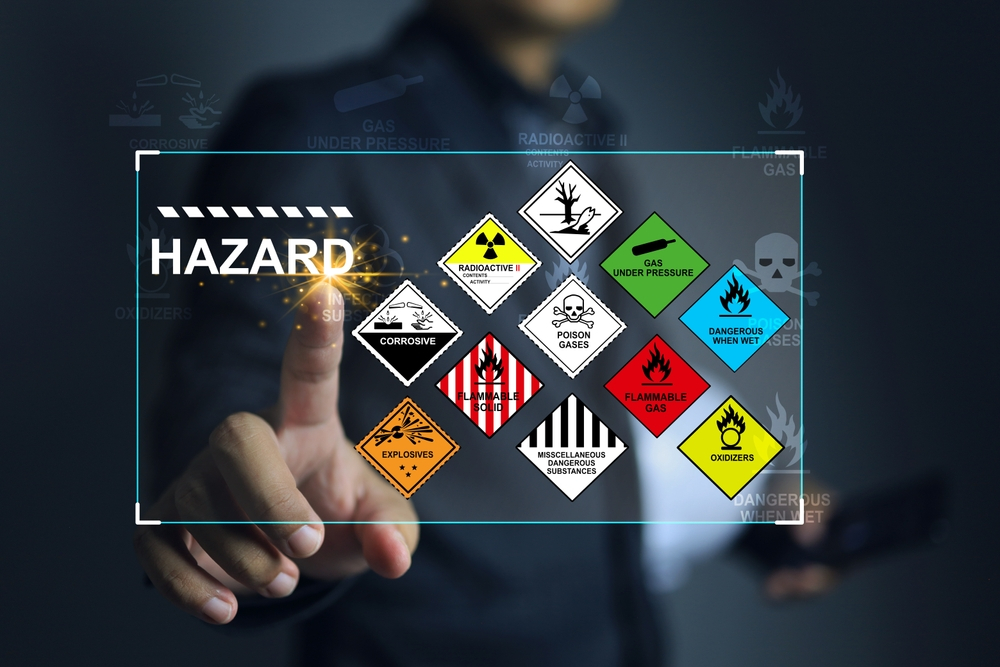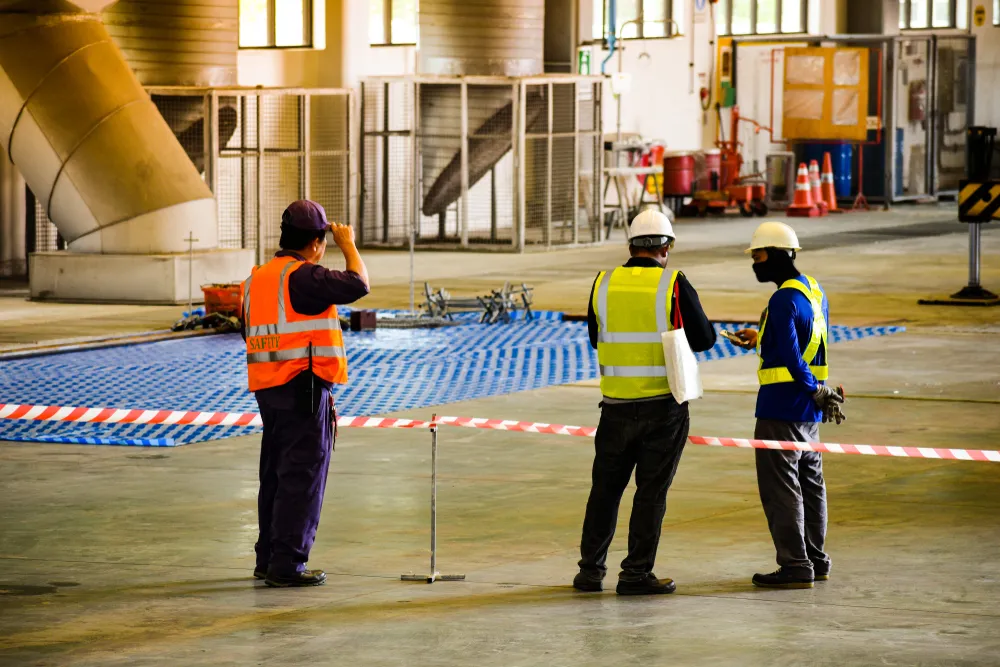The Definitive Guide to Roar Solutions
Table of Contents7 Easy Facts About Roar Solutions ShownAn Unbiased View of Roar SolutionsRoar Solutions - Truths
In order to protect setups from a possible explosion a technique of analysing and categorizing a possibly unsafe area is required. The purpose of this is to make sure the proper selection and installment of devices to inevitably protect against an explosion and to make sure safety and security of life.

No tools needs to be mounted where the surface area temperature level of the devices is more than the ignition temperature level of the provided risk. Below are some typical dust hazardous and their minimum ignition temperature level. Coal Dirt 380C 225C Polythene 420C (thaws) Methyl Cellulose 420C 320C Starch 460C 435C Flour 490C 340C Sugar 490C 460C Grain Dust 510C 300C Phenolic Resin 530C > 450C Aluminium 590C > 450C PVC 700C > 450C Residue 810C 570C The possibility of the danger being present in a concentration high enough to trigger an ignition will differ from place to location.
In order to classify this threat a setup is divided right into areas of risk relying on the amount of time the unsafe is existing. These locations are described as Zones. For gases and vapours and dirts and fibres there are 3 areas. Zone 0 Area 20 An unsafe ambience is highly most likely to be present and might exist for extended periods of time (> 1000 hours per year) or also continuously Area 1 Zone 21 An unsafe environment is feasible but not likely to be present for lengthy durations of time (> 10 450 C [842 F] A category of T6 suggests the minimum ignition temperature level is > 85 C [185 F] Dangerous location electrical tools possibly designed for use in greater ambient temperatures. This would certainly showed on the score plate e.g. EExe II C T3 Ta + 60C( This suggests at 60C ambient T3 will not be exceeded) T1 T1, T2, T3, T4, T5, T6 T2 T2, T3, T4, T5, T6 T3 T3, T4, T5, T6 T4 T4, T5, T6 T5 T5, T6 T6 T6 A T Class score of T1 means the maximum surface area temperature level generated by the instrument at 40 C is 450 C. Presuming the associated T Class and Temperature level ranking for the equipment are proper for the location, you can always utilize a tool with an extra stringent Division ranking than needed for the area. There isn't a clear response to this question sadly. It actually does depend on the kind of devices and what fixings need to be performed. Equipment with certain examination treatments that can not be done in the area in order to achieve/maintain 3rd event rating. Must come back to the factory if it is before the tools's service. Area Repair By Authorised Worker: Challenging screening might not be called for nonetheless specific treatments might require to be adhered to in order for the tools to keep its 3rd party score. Authorised personnel should be employed to execute the job appropriately Repair work should be a like for like replacement. New part have to be considered as a straight substitute requiring no special screening of the devices after the repair work is complete. Each tool with an unsafe score should be reviewed individually. These are detailed at a high level listed below, but also for more detailed details, please refer straight to the guidelines.
An Unbiased View of Roar Solutions
The devices register is a thorough data source of equipment records that includes a minimum set of fields to identify each product's place, technological criteria, Ex-spouse category, age, and ecological information. This info is crucial for tracking and managing the equipment efficiently within harmful locations. In comparison, for routine or RBI tasting examinations, the quality will certainly be a mix of Thorough and Close examinations. The ratio of Comprehensive to Close evaluations will be identified by the Equipment Risk, which is evaluated based on ignition danger (the possibility of a source of ignition versus the probability of a combustible environment )and the harmful area classification
( Area 0, 1, or 2). This variant will also influence the resourcing needs for job preparation. As soon as Whole lots are defined, you can create tasting plans based on the example dimension of each Great deal, which refers to the variety of random equipment things to be evaluated. To figure out the needed sample size, 2 facets need to be reviewed: the size of the Whole lot and the group of evaluation, which shows the level of initiative that ought to be used( minimized, normal, or boosted )to the assessment of the Lot. By incorporating the classification of inspection with the Whole lot size, you can then establish the appropriate denial standards for an example, meaning the allowed number of defective things discovered within that example. For more details on this procedure, please refer to the Power Institute Guidelines. The IEC 60079 typical suggests that the optimum period between examinations need to not surpass 3 years. EEHA assessments will certainly also be carried out beyond RBI projects as part of scheduled maintenance and tools overhauls or repair services. These examinations can be credited toward the RBI sample sizes within the impacted Whole lots. EEHA inspections are conducted to determine mistakes in electric tools. A weighted scoring system is important, as a single item of equipment might have numerous faults, each with varying levels of ignition threat. If the combined rating of both examinations is less than twice the fault score, the Great deal is deemed acceptable. If the Lot is still taken into consideration undesirable, it needs to go through a full examination or reason, which may activate stricter assessment protocols. Accepted Whole lot: The sources of any type of faults are recognized. If a typical failing mode is found, additional equipment might need evaluation and repair. Mistakes are classified by extent( Security, Stability, Housekeeping ), making certain that urgent problems are examined and addressed without delay to minimize any type of influence on safety or procedures. The EEHA database must track and videotape the lifecycle of mistakes together with the restorative activities taken. Applying a durable Risk-Based Inspection( RBI )technique is critical for ensuring compliance and safety in taking care of Electrical Equipment in Hazardous Areas( EEHA) (electrical refresher course). Automated Mistake Rating and Lifecycle Monitoring: Easily take care of mistakes and track their lifecycle to improve assessment precision. The introduction of this support for risk-based evaluation even more enhances Inspectivity's position as a best-in-class service for regulative compliance, in addition to for any type of asset-centric examination use case. If you want finding out more, we welcome you to request a presentation and discover how our remedy can change your EEHA administration processes.
Rumored Buzz on Roar Solutions

In terms of explosive threat, an unsafe location is an atmosphere in which an eruptive environment exists (or may be expected to be existing) in quantities that call for special precautions for the building, installation and usage of devices. high voltage courses. In this write-up we check out the obstacles dealt with in the workplace, the threat control procedures, and the required proficiencies to function safely
It is a consequence of modern life that we manufacture, keep or take care of a variety of gases or fluids that are deemed combustible, and an array of dusts that are regarded combustible. These materials can, in certain problems, create explosive environments and these can try this site have significant and terrible effects. A lot of us know with the fire triangle eliminate any kind of one of the three aspects and the fire can not take place, but what does this mean in the context of harmful locations? When breaking this down into its most basic terms it is essentially: a mix of a specific quantity of release or leakage of a particular material or material, combining with ambient oxygen, and the visibility of a source of ignition.
In a lot of circumstances, we can do little concerning the degrees of oxygen airborne, however we can have considerable impact on resources of ignition, for instance electrical devices. Hazardous locations are recorded on the harmful area category illustration and are determined on-site by the triangular "EX LOVER" sign. Below, among other key details, areas are split right into three kinds relying on the danger, the probability and duration that an eruptive atmosphere will certainly exist; Area 0 or 20 is deemed one of the most harmful and Zone 2 or 22 is regarded the least.
Comments on “Roar Solutions for Beginners”